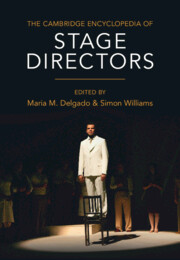Refine search
Actions for selected content:
212 results
Chapter 8 - Ancient Biographies of Pythagoras and Epicurus as Models of the Philosophical Life
- from Part II - Ethics
-
- Book:
- The Ladder of the Sciences in Late Antique Platonism
- Published online:
- 08 December 2025
- Print publication:
- 08 January 2026, pp 113-123
-
- Chapter
- Export citation
Chapter 6 - Ethics in Plotinus and His Successors
- from Part II - Ethics
-
- Book:
- The Ladder of the Sciences in Late Antique Platonism
- Published online:
- 08 December 2025
- Print publication:
- 08 January 2026, pp 77-97
-
- Chapter
- Export citation
10 - Human Nature
- from Part II - Theological Themes
-
-
- Book:
- The Origins of Scholasticism
- Published online:
- 18 November 2025
- Print publication:
- 08 January 2026, pp 284-308
-
- Chapter
- Export citation
Chapter 13 - Ship-Worlds
- from Part III - ‘One of Us’
-
-
- Book:
- 'The People' and British Literature
- Published online:
- 11 December 2025
- Print publication:
- 11 December 2025, pp 208-222
-
- Chapter
- Export citation
Chapter 13 - The Hippocratic corpus and total loss of consciousness
- from Part III - Fainting
-
- Book:
- Impaired Consciousness in Ancient Medical Texts
- Published online:
- 04 December 2025
- Print publication:
- 04 December 2025, pp 154-161
-
- Chapter
-
- You have access
- Open access
- HTML
- Export citation
Chapter 16 - Concluding reflections on the implication of the soul in total loss of consciousness
- from Part III - Fainting
-
- Book:
- Impaired Consciousness in Ancient Medical Texts
- Published online:
- 04 December 2025
- Print publication:
- 04 December 2025, pp 193-196
-
- Chapter
-
- You have access
- Open access
- HTML
- Export citation
Chapter 12 - General overview of total loss of consciousness
- from Part III - Fainting
-
- Book:
- Impaired Consciousness in Ancient Medical Texts
- Published online:
- 04 December 2025
- Print publication:
- 04 December 2025, pp 151-153
-
- Chapter
-
- You have access
- Open access
- HTML
- Export citation
Chapter 15 - Galen’s two ways of losing consciousness
- from Part III - Fainting
-
- Book:
- Impaired Consciousness in Ancient Medical Texts
- Published online:
- 04 December 2025
- Print publication:
- 04 December 2025, pp 183-192
-
- Chapter
-
- You have access
- Open access
- HTML
- Export citation
Chapter 14 - Total loss of consciousness in post-Hellenistic authors
- from Part III - Fainting
-
- Book:
- Impaired Consciousness in Ancient Medical Texts
- Published online:
- 04 December 2025
- Print publication:
- 04 December 2025, pp 162-182
-
- Chapter
-
- You have access
- Open access
- HTML
- Export citation
Chapter 26 - Body, Eating, and Exercise Comparison Orientation Measure (BEECOM)
-
-
- Book:
- Handbook of Body Image-Related Measures
- Published online:
- 21 November 2025
- Print publication:
- 20 November 2025, pp 79-81
-
- Chapter
- Export citation
Chapter 7 - Suárez on Distinctions
- from Part II - Being, Its Properties, and Ancillary Notions
-
-
- Book:
- Suárez's <i>Metaphysical Disputations</i>
- Published online:
- 13 October 2025
- Print publication:
- 30 October 2025, pp 123-142
-
- Chapter
- Export citation
14 - Liturgy, the Body, and the Senses
- from Part IV - Liturgy and the Life of the Churches
-
-
- Book:
- The Cambridge Companion to Christian Liturgy
- Published online:
- 19 September 2025
- Print publication:
- 09 October 2025, pp 251-267
-
- Chapter
- Export citation
Chapter 5 - Learning in drama
- from Part 2 - What: the arts learning areas
-
- Book:
- Teaching the Arts
- Published online:
- 28 July 2025
- Print publication:
- 06 August 2025, pp 130-171
-
- Chapter
- Export citation
Introduction
-
- Book:
- Embodiment in Nineteenth-Century American Literature
- Published online:
- 29 June 2025
- Print publication:
- 17 July 2025, pp 1-25
-
- Chapter
- Export citation
Chapter 3 - Doubleness
-
- Book:
- Embodiment in Nineteenth-Century American Literature
- Published online:
- 29 June 2025
- Print publication:
- 17 July 2025, pp 83-125
-
- Chapter
- Export citation
Chapter 2 - Betweenness
-
- Book:
- Embodiment in Nineteenth-Century American Literature
- Published online:
- 29 June 2025
- Print publication:
- 17 July 2025, pp 55-82
-
- Chapter
- Export citation
Chapter 1 - Drift
-
- Book:
- Embodiment in Nineteenth-Century American Literature
- Published online:
- 29 June 2025
- Print publication:
- 17 July 2025, pp 26-54
-
- Chapter
- Export citation
Chapter 11 - Disability
- from Part II - Social Contexts
-
-
- Book:
- Sean O'Casey in Context
- Published online:
- 23 June 2025
- Print publication:
- 10 July 2025, pp 120-129
-
- Chapter
- Export citation

Embodiment in Nineteenth-Century American Literature
-
- Published online:
- 29 June 2025
- Print publication:
- 17 July 2025

The Cambridge Encyclopedia of Stage Directors
-
- Published online:
- 19 June 2025
- Print publication:
- 03 July 2025
